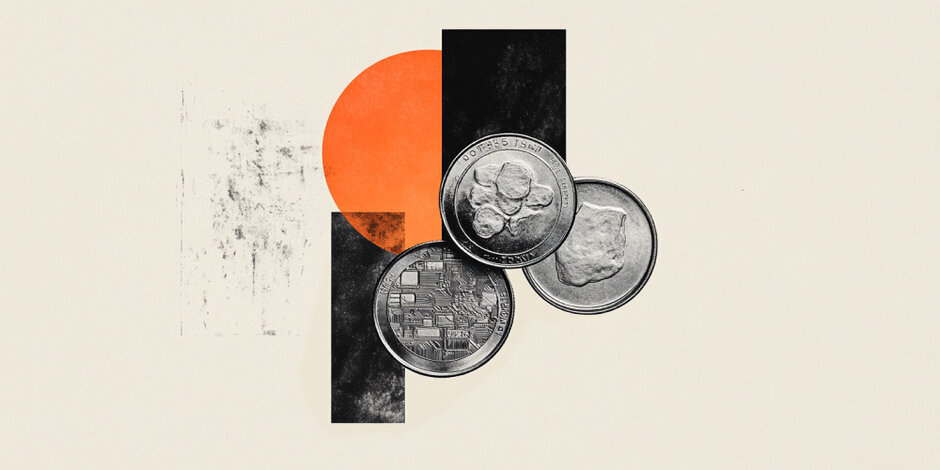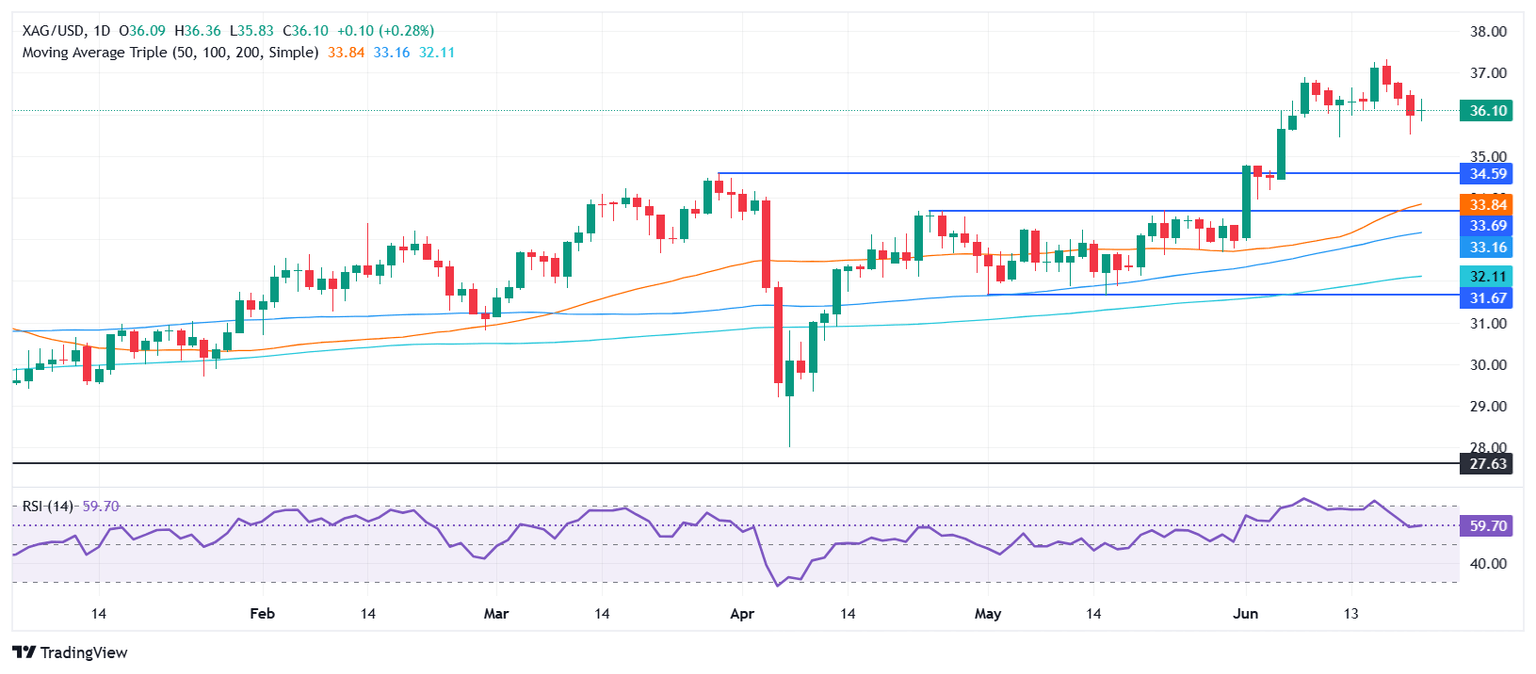Silver Price Forecast: XAG/USD steadies above $36.00 as bulls regain control
- Silver rebounds from last week’s low of $35.51, climbs above $36.00 with 1.7% recovery.
- RSI points to bullish momentum; key resistance at $36.50 and $37.32 yearly high.
- Close below $36.00 could expose support levels at $35.46 and $34.59.

Silver prices stabilized as the week began, rising 0.39%, as slight risk aversion amid heightened geopolitical tensions provided support. XAG/USD reached a daily high of $36.36 before settling at $36.14, ending three days of losses.
XAG/USD Price Forecast: Technical outlook
Silver remains upwardly biased, despite hitting a weekly low of $35.51 last week. Since then, XAG/USD recovered over 1.70%, lifting the grey metal price above $36.00, and paving the way for further upside.
The Relative Strength Index (RSI) shows that buyers remain in control. Therefore, further upside is seen.
If XAG/USD rises past $36.50, this will expose the $37.00 figure. The next supply zone of interest would be the June 18 yearly high at $37.32, ahead of $37.50
Conversely, a daily close below $36.00 could sponsor a move towards the June 12 swing low of $35.46, ahead of March 28 peak turned support at $34.59.
XAG/USD Price Chart – Daily

Silver FAQs
Silver is a precious metal highly traded among investors. It has been historically used as a store of value and a medium of exchange. Although less popular than Gold, traders may turn to Silver to diversify their investment portfolio, for its intrinsic value or as a potential hedge during high-inflation periods. Investors can buy physical Silver, in coins or in bars, or trade it through vehicles such as Exchange Traded Funds, which track its price on international markets.
Silver prices can move due to a wide range of factors. Geopolitical instability or fears of a deep recession can make Silver price escalate due to its safe-haven status, although to a lesser extent than Gold's. As a yieldless asset, Silver tends to rise with lower interest rates. Its moves also depend on how the US Dollar (USD) behaves as the asset is priced in dollars (XAG/USD). A strong Dollar tends to keep the price of Silver at bay, whereas a weaker Dollar is likely to propel prices up. Other factors such as investment demand, mining supply – Silver is much more abundant than Gold – and recycling rates can also affect prices.
Silver is widely used in industry, particularly in sectors such as electronics or solar energy, as it has one of the highest electric conductivity of all metals – more than Copper and Gold. A surge in demand can increase prices, while a decline tends to lower them. Dynamics in the US, Chinese and Indian economies can also contribute to price swings: for the US and particularly China, their big industrial sectors use Silver in various processes; in India, consumers’ demand for the precious metal for jewellery also plays a key role in setting prices.
Silver prices tend to follow Gold's moves. When Gold prices rise, Silver typically follows suit, as their status as safe-haven assets is similar. The Gold/Silver ratio, which shows the number of ounces of Silver needed to equal the value of one ounce of Gold, may help to determine the relative valuation between both metals. Some investors may consider a high ratio as an indicator that Silver is undervalued, or Gold is overvalued. On the contrary, a low ratio might suggest that Gold is undervalued relative to Silver.
Author

Christian Borjon Valencia
FXStreet
Christian Borjon began his career as a retail trader in 2010, mainly focused on technical analysis and strategies around it. He started as a swing trader, as he used to work in another industry unrelated to the financial markets.
















